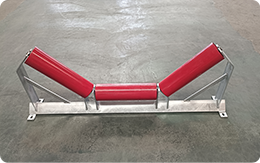 Afrikaans
Afrikaans  Albanian
Albanian  Amharic
Amharic  Arabic
Arabic  Armenian
Armenian  Azerbaijani
Azerbaijani  Basque
Basque  Belarusian
Belarusian  Bengali
Bengali  Bosnian
Bosnian  Bulgarian
Bulgarian  Catalan
Catalan  Cebuano
Cebuano  Corsican
Corsican  Croatian
Croatian  Czech
Czech  Danish
Danish  Dutch
Dutch  English
English  Esperanto
Esperanto  Estonian
Estonian  Finnish
Finnish  French
French  Frisian
Frisian  Galician
Galician  Georgian
Georgian  German
German  Greek
Greek  Gujarati
Gujarati  Haitian Creole
Haitian Creole  hausa
hausa  hawaiian
hawaiian  Hebrew
Hebrew  Hindi
Hindi  Miao
Miao  Hungarian
Hungarian  Icelandic
Icelandic  igbo
igbo  Indonesian
Indonesian  irish
irish  Italian
Italian  Japanese
Japanese  Javanese
Javanese  Kannada
Kannada  kazakh
kazakh  Khmer
Khmer  Rwandese
Rwandese  Korean
Korean  Kurdish
Kurdish  Kyrgyz
Kyrgyz  Lao
Lao  Latin
Latin  Latvian
Latvian  Lithuanian
Lithuanian  Luxembourgish
Luxembourgish  Macedonian
Macedonian  Malgashi
Malgashi  Malay
Malay  Malayalam
Malayalam  Maltese
Maltese  Maori
Maori  Marathi
Marathi  Mongolian
Mongolian  Myanmar
Myanmar  Nepali
Nepali  Norwegian
Norwegian  Norwegian
Norwegian  Occitan
Occitan  Pashto
Pashto  Persian
Persian  Polish
Polish  Portuguese
Portuguese  Punjabi
Punjabi  Romanian
Romanian  Russian
Russian  Samoan
Samoan  Scottish Gaelic
Scottish Gaelic  Serbian
Serbian  Sesotho
Sesotho  Shona
Shona  Sindhi
Sindhi  Sinhala
Sinhala  Slovak
Slovak  Slovenian
Slovenian  Somali
Somali  Spanish
Spanish  Sundanese
Sundanese  Swahili
Swahili  Swedish
Swedish  Tagalog
Tagalog  Tajik
Tajik  Tamil
Tamil  Tatar
Tatar  Telugu
Telugu  Thai
Thai  Turkish
Turkish  Turkmen
Turkmen  Ukrainian
Ukrainian  Urdu
Urdu  Uighur
Uighur  Uzbek
Uzbek  Vietnamese
Vietnamese  Welsh
Welsh  Bantu
Bantu  Yiddish
Yiddish  Yoruba
Yoruba  Zulu
Zulu conveyor drive pulley
Understanding Conveyor Drive Pulleys Their Role in Material Handling
In the world of material handling and transportation, conveyor systems play a crucial role in facilitating efficient movement of goods across various industries. One of the critical components of these systems is the conveyor drive pulley, which is integral to the operation of any conveyor belt system. Understanding the design, function, and importance of drive pulleys can provide insights into the overall effectiveness of conveyor systems.
What is a Conveyor Drive Pulley?
A conveyor drive pulley is a component of a conveyor belt system that provides the necessary force to move the belt and, consequently, the materials transported on it. Typically situated at one end of the conveyor system, the drive pulley is powered by an electric motor via a drive mechanism. Its primary function is to serve as the main point of motion, enabling the continuous movement of the conveyor belt.
Design and Construction
Drive pulleys are designed to accommodate various load capacities and operational conditions. They are usually made from materials that offer durability and strength, such as steel or reinforced rubber, to withstand wear and tear from constant use. The surface of the drive pulley is often equipped with a textured finish to enhance traction between the pulley and the belt. Additionally, drive pulleys may come in various diameters and widths, depending on the specifications of the conveyor system they serve.
Types of Conveyor Drive Pulleys
There are several types of conveyor drive pulleys, each with unique features suited for specific applications
1. Head Pulleys Located at the discharge end of the conveyor, head pulleys drive the belt and often work in conjunction with tail pulleys that return the belt to its starting point.
conveyor drive pulley

2. Tail Pulleys These are located at the opposite end of the conveyor system and are critical for maintaining tension in the belt.
3. Snub Pulleys Used to create additional tension, snub pulleys can also help redirect the belt by adjusting its path.
4. Guide Pulleys These are used for alignment purposes, ensuring that the belt runs straight along the conveyor path.
Importance of Drive Pulleys
The efficiency of a conveyor system largely hinges on the performance of its drive pulleys. Properly functioning drive pulleys ensure smooth transportation of materials, reducing the risk of delays due to mechanical failures. Furthermore, the choice of drive pulley impacts energy consumption and operational costs. Selecting the right pulley can enhance the system’s overall efficiency, leading to significant savings for businesses.
Moreover, drive pulleys contribute to safety within conveyor systems. By providing reliable tension and maintaining the correct belt alignment, they reduce the likelihood of accidents that can occur due to slippage or misalignment. Regular maintenance and monitoring of drive pulleys are essential to prevent wear and tear, thereby extending the lifespan of both the pulleys and the conveyor belts they drive.
Conclusion
In summary, conveyor drive pulleys play a pivotal role in the effective operation of conveyor systems used in diverse industries ranging from manufacturing to logistics. Their design, functionality, and proper maintenance are essential for ensuring efficient material handling. By understanding the types and significance of drive pulleys, businesses can make informed decisions about their conveyor systems, ultimately enhancing productivity and safety. When properly selected and maintained, drive pulleys can significantly contribute to the success of material transport operations, making them indispensable in modern industrial practices.
-
Revolutionizing Conveyor Reliability with Advanced Rubber Lagging PulleysNewsJul.22,2025
-
Powering Precision and Durability with Expert Manufacturers of Conveyor ComponentsNewsJul.22,2025
-
Optimizing Conveyor Systems with Advanced Conveyor AccessoriesNewsJul.22,2025
-
Maximize Conveyor Efficiency with Quality Conveyor Idler PulleysNewsJul.22,2025
-
Future-Proof Your Conveyor System with High-Performance Polyurethane RollerNewsJul.22,2025
-
Driving Efficiency Forward with Quality Idlers and RollersNewsJul.22,2025





























